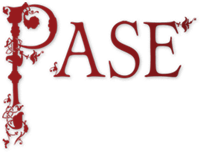Table of Contents
Top of page
Name
Summary
Distribution Map
Property List
Profile
Bibliography
Bottom of page
Ifing 3
Ifing ‘of Norton’ (Somerset), fl. 1066
Male
DWP
4 of 5
Summary
Ifing 3 held two estates in Somerset and Wiltshire TRE with a combined assessment of 15 hides and a value of £11; he may have been a royal official, perhaps a steward.Distribution map of property and lordships associated with this name in DB
List of property and lordships associated with this name in DB
Holder 1066
| Shire | Phil. ref. | Vill | DB Spelling | Holder 1066 | Lord 1066 | Tenant-in-Chief 1086 | 1086 Subtenant | Fiscal Value | 1066 Value | 1086 Value | Conf. | Show on Map |
|---|---|---|---|---|---|---|---|---|---|---|---|---|
| Somerset | 40,2 | Norton St Philip | Iuing | Ifing 'of Norton' | - | Edward of Salisbury | - | 10.00 | 6.00 | 7.00 | - | Map |
| Wiltshire | 47,1 | Fonthill Giffard | Euing | Ifing 'of Norton' | - | Berenger Giffard | - | 5.00 | 5.00 | 6.00 | - | Map |
| Totals | ||||||||||||
Profile
Ifing 3’s largest estate was at Norton St Philip, on a tributary of the Wellow Brook in north-east Somerset, where 2 carucates of his 10 hides were said to have been given to him by King Edward. This grant suggests that at least a part of Ifing’s estate at Norton was held as a consequence of royal service, and it may be significant in this respect that the estate was in the hands of the sheriff of Wiltshire by 1086.Ifing 3’s other estate was of 5 hides at Fonthill Giffard, on a tributary of the river Nadder in south-west Wiltshire. It is only 18 miles from Norton, which given the sizes of the two estates is a short enough distance for them to have been held by the same person. The DB spelling of Euing for the name of Fonthill’s TRE holder is readily explicable as a form for Ifing (von Feilitzen 1937: 249), and it is far more likely that Ifing 3 held both estates than that two separate people with the same extremely rare name should each hold substantial estates so close to each other.
It is possible that Ifing 3 should also be identified with Yfing 1, who was described as a royal steward (regis dapifer) among witnesses to a probably spurious charter of 1062 (S 1036; Kemble 1839-48: 4 154-9 no.813). Even if the charter is a post-Conquest forgery, however, it is notable that the forger either chose to include someone with the extremely rare name Yfing alongside known and contemporary royal officials such as Wigod 2 and Herding 1 or else was adapting an existing witness-list in which someone called Yfing was already thus described. Given that Yfing is probably a variant spelling of the name Ifing (Redin 1919: 170-1; cf. von Feilitzen 1937: 429), and given the possibility that Ifing 3 was a royal official, it is very tempting to regard Yfing 1 and Ifing 3 as one and the same person.
Bibliography
von Feilitzen 1937: O. von Feilitzen, The Pre-Conquest Personal Names of Domesday Book, Nomina Germanica 3 (Uppsala, 1937)
Kemble 1839-48: J. Kemble, Codex Diplomaticus Aevi Saxonici, 6 vols. (London, 1839-48)
Redin 1919: M. Redin, Studies on Uncompounded Personal Names in Old English (Uppsala, 1919)
